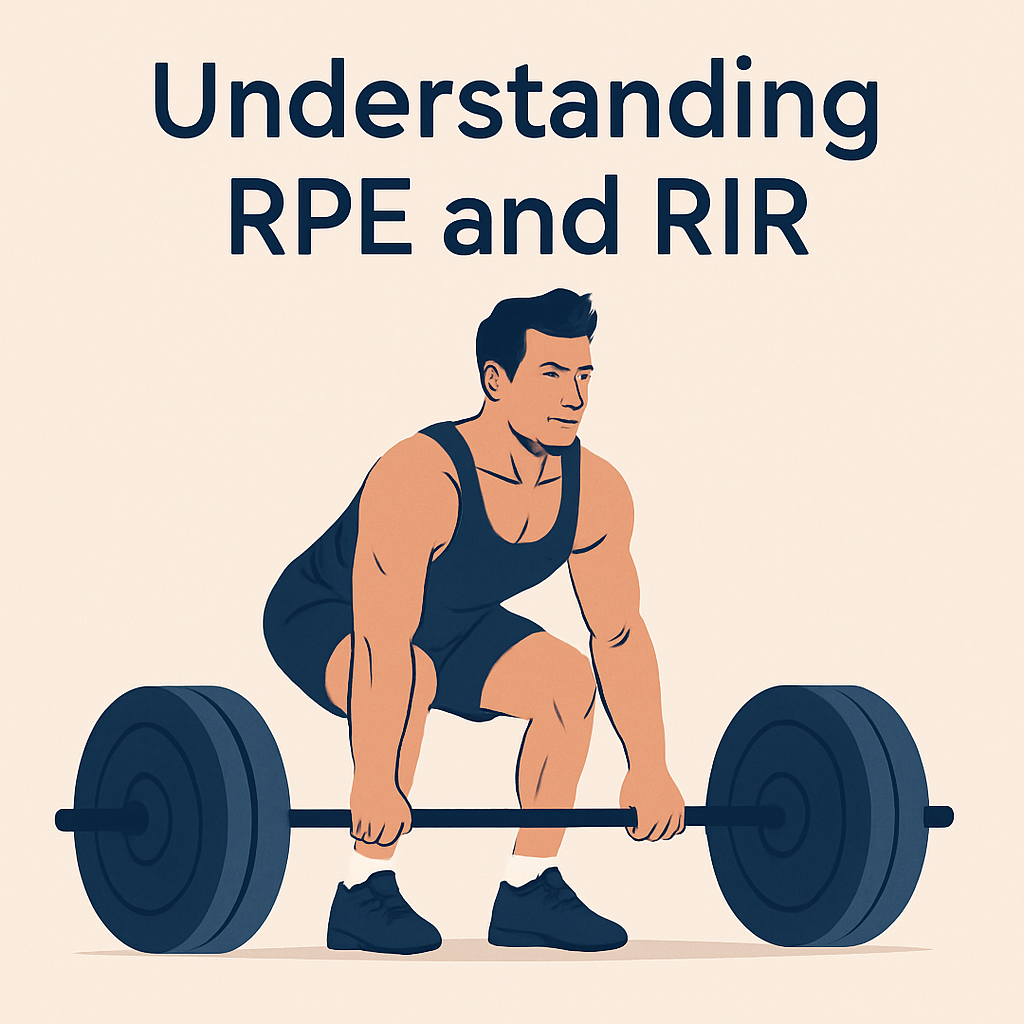RPE and RIR: The Smartest Tools You’re Not Using in Strength Training

Ever feel like your workouts are either too easy or leave you completely wiped out?
That’s where two simple ideas—RPE (Rate of Perceived Exertion) and RIR (Reps in Reserve)—can change everything. These tools help you train smarter, adjust for real-life ups and downs like work stress, family responsibilities, a terrible night’s sleep, etc., and still make consistent progress in the gym.
Let’s break them down in plain language.
What Is RPE in Weight Training?
RPE stands for Rate of Perceived Exertion. Think of it as a 1–10 scale for how hard a set feels:
- RPE 6 = You had 4 more reps in you
- RPE 7 = 3 reps left
- RPE 8 = 2 reps left
- RPE 9 = 1 rep left
- RPE 10 = You gave it everything—no reps left
If you did 8 reps of squats and could’ve squeezed out two more, that was RPE 8.
What Is RIR?
RIR stands for Reps In Reserve. It’s the reverse of RPE:
- RPE 8 = 2 RIR
- RPE 9 = 1 RIR
- RPE 10 = 0 RIR
Some coaches use RPE. Others prefer RIR. But both measure the same thing—how close you are to failure in a set.
Why Should You Use RPE and RIR?
Here’s the deal: not every workout needs to be a max effort day. Life happens. Sleep, stress, soreness—all of that affects performance.
That’s why using RPE or RIR helps. They let you adjust your training in real-time.
Instead of blindly following numbers on a spreadsheet, you listen to your body.
✅ Feeling great? Push the weight.
❌ Feeling drained? Dial it back a bit.
It’s called autoregulation, and it helps you train hard without burning out.
How RPE Helps You Build Muscle (Without Overdoing It)
Want to grow muscle? You don’t need to hit failure every time. Most research shows that staying within 1–3 reps of failure (RPE 7–9) is the sweet spot for muscle growth.
That means you’re doing real work—without wrecking your recovery.
How to Use RPE in Your Program
Let’s say your plan says:
3 sets of 6 reps at RPE 8
That means you choose a weight that feels like you could do 8 reps, but you stop at 6.
Simple, right? The more you use it, the better your accuracy gets.
And if you’re not sure how to gauge it, we made a free AutoReg Load Calculator to take out the guesswork. It helps you find the right weight for your sets—based on your performance that day.
RPE and RIR: A Smarter Way to Train
Look, this stuff isn’t complicated.
RPE and RIR teach you to listen to your body, train with intent, and stop guessing. Once you start using them, you’ll wonder how you ever trained without them.
Want to stop spinning your wheels?
Start tracking your effort.
👉 Try our free RPE/RIR Calculator and make your training work for you—not the other way around.
Quick Takeaways
- RPE = how hard the set felt
- RIR = how many reps you had left
- Both help you avoid overtraining
- Ideal range for muscle gain = RPE 7–9
- Adjust daily based on how you feel
- Use tools like a load calculator to make it easy
- Learn More Here.